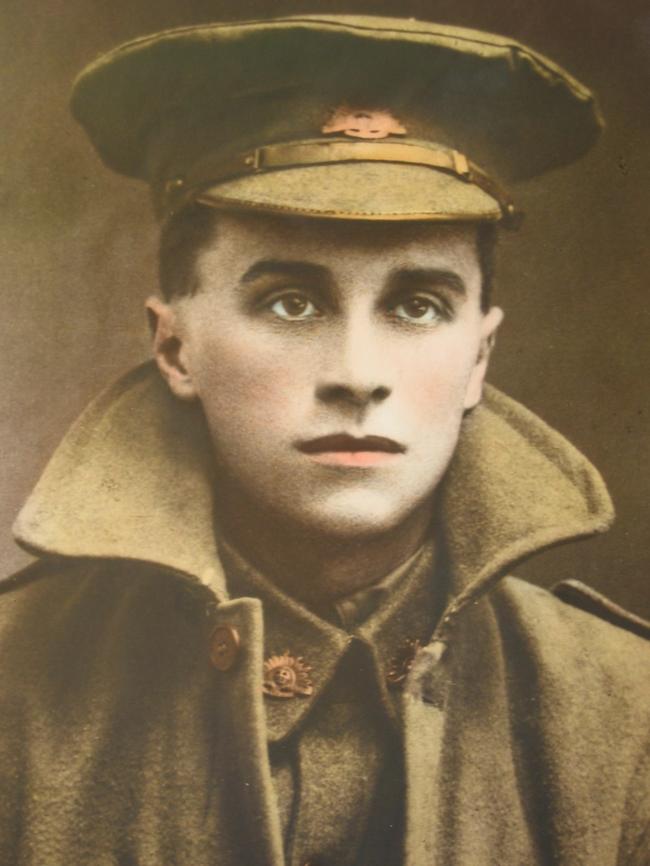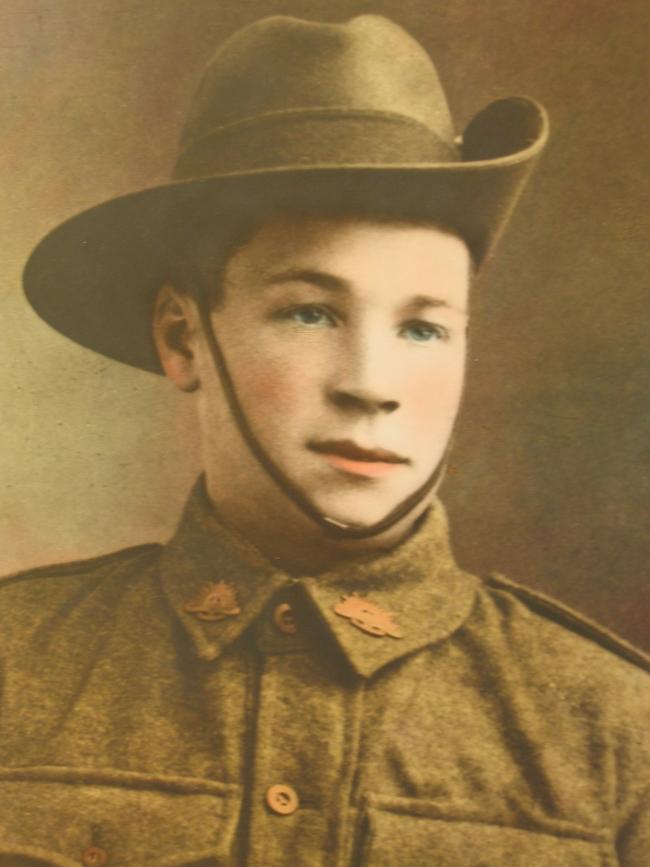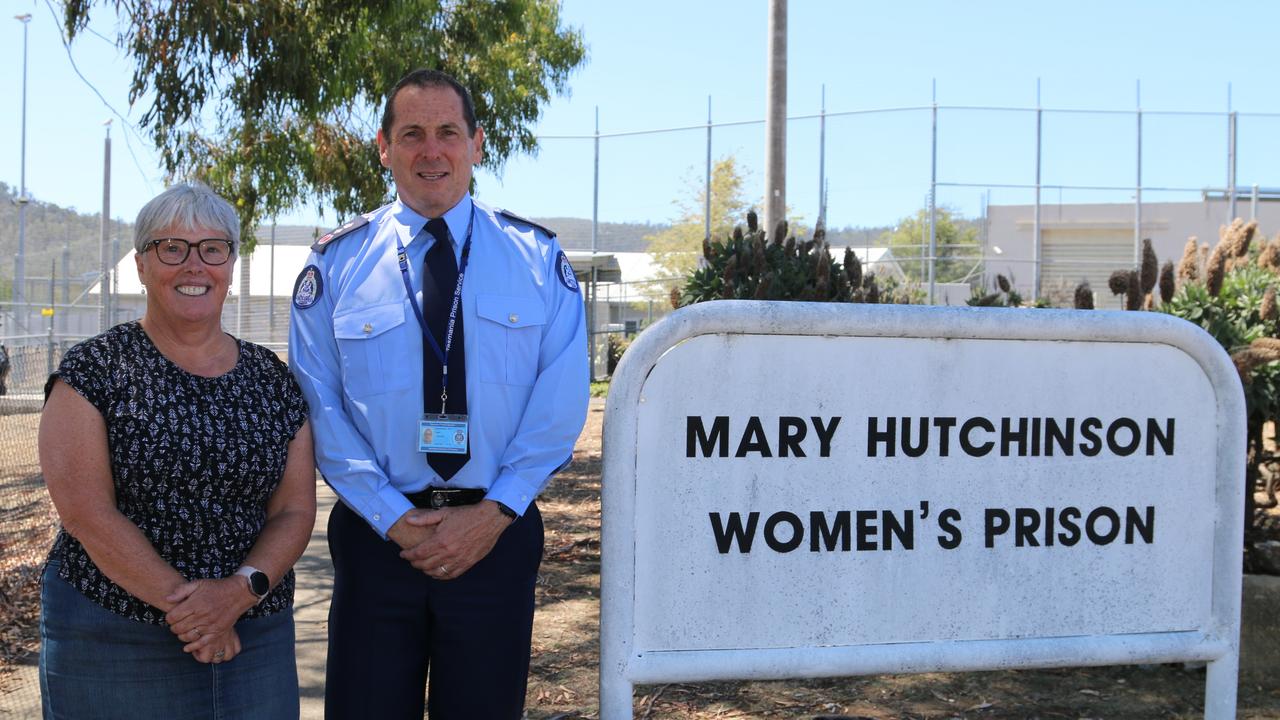Sorrow for Tasmanian brothers killed in World War I has endured for generations
ADJACENT trees on the Soldiers’ Memorial Avenue tell the story of one family’s sorrow at losing two sons in World War I.
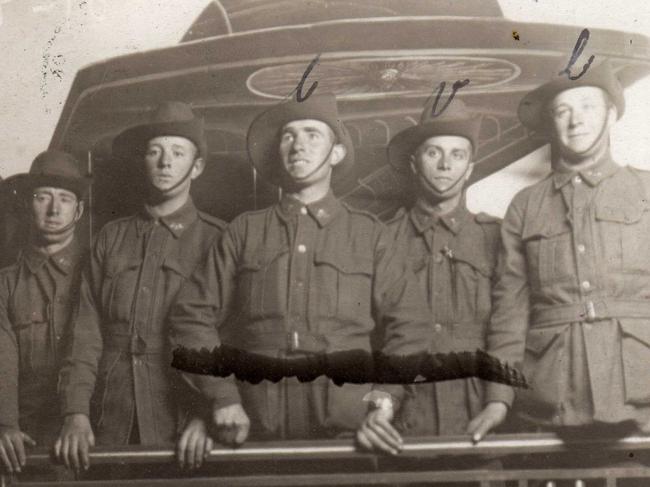
Tasmania
Don't miss out on the headlines from Tasmania. Followed categories will be added to My News.
TREE number 412 on the Soldiers’ Memorial Avenue is dedicated to Private Victor John Gray of the 12th Battalion, while tree number 416 — immediately adjacent in the same row — is in memory of his younger brother, Private Charles William Thomas Gray of the same battalion.
The boys were the sons of John and Louisa Gray of Huon Rd, Fern Tree. Victor, born in 1893, was the eldest of 15 children. Charlie was born three years later. A sister, Gladys (born 1894), separated the two boys.
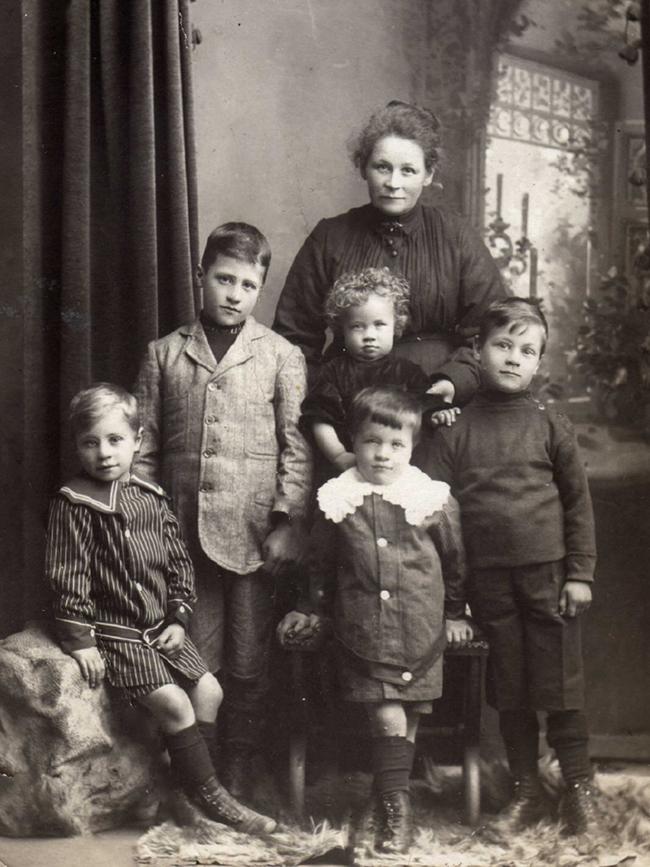
Victor was a thoughtful, good-natured fellow while younger brother Charlie was the fun-loving larrikin. They had a brief education at the Fern Tree State School at Neika and worked on the family farm on Huon Rd where a dairy, pigs and strawberries were among the produce.
Charlie tried to enlist in late 1915, aged 19, but his father refused to give permission for his second oldest son to enlist.
Later in 1915, Victor travelled to New Zealand for work with friend Albert (Jack) Williams. They worked for six months at a slaughter house in Wellington. Knowing his brother’s restlessness, Victor offered to find him work in New Zealand, but he had joined the army in the meantime.
Victor had joined the Reserves in his adopted home and was called up for active service with the New Zealand Expeditionary Forces but preferred to return to Tasmania to offer himself for service with the Australian army.
Their friend Jack Williams also enlisted with Victor and would later marry sister Gladys.
The Gray brothers sailed together on the Palermo on September 30, 1916. Their letters to home note that the day they left home was grey and raining heavily.
Their mother had recently given birth to another son, Athol Arthur, and the boys managed to see their baby brother just once before their departure.
Remembering 100 Tasmanian heroes of World War I
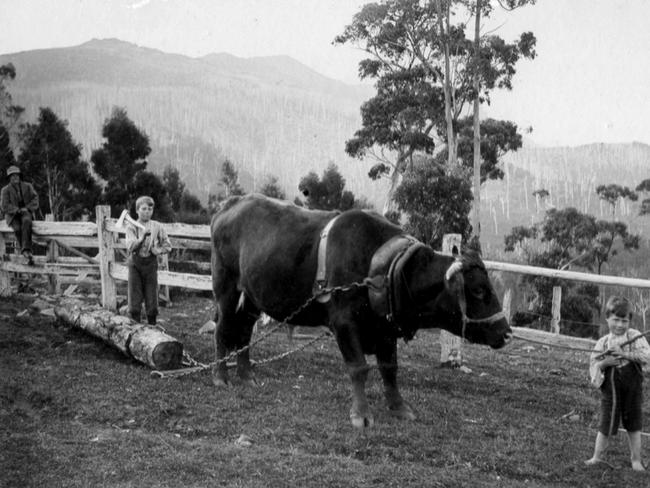
The Gray family, whilst very large, was loving and close-knit, and the two boys’ absence was felt very much. In particular their sister Gladys was planning her wedding to fiance Jack.
The 1916-17 winter in France was the coldest in living memory. Victor’s letters home from “Somewhere in France” speak of the extreme cold but he does not talk of the unfolding horror around him.
Engaged in some of the toughest battles in the Western Front, the 12th Battalion was made up of mostly Tasmanians and South Australians. Many units contained cousins, brothers and neighbours as well as good mates.
The grand adventure that Charlie had imagined was in reality frozen trenches, sub-zero temperatures and mates dying horrific and violent deaths in front of them.
No letters exist from Charlie after his arrival in France. Possibly he found himself unable to comprehend the situation he landed in. It is likely that he was more preoccupied with simply staying alive.
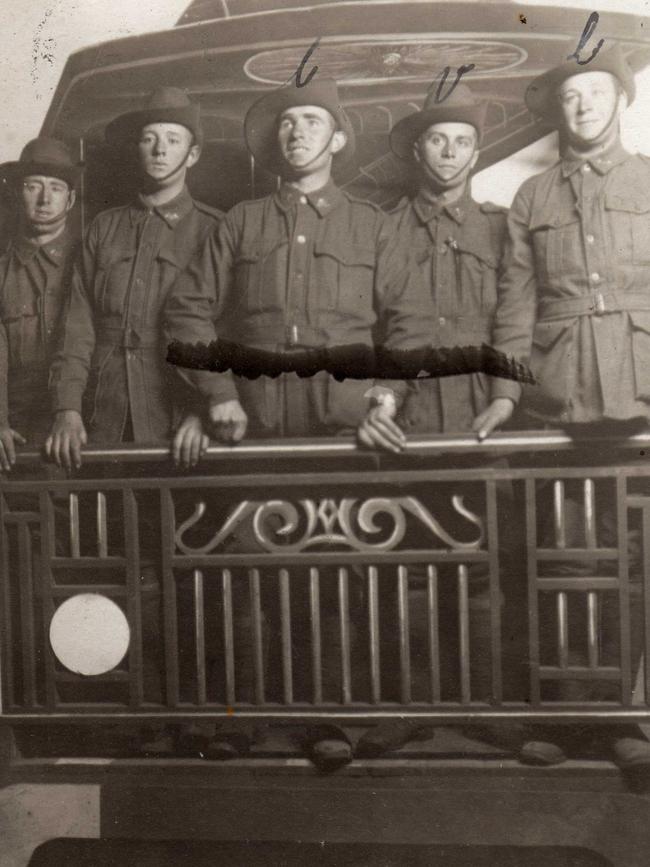
On Easter Sunday morning (April 8, 1917) Victor was shot in the head while fighting. His injuries were listed as a fractured skull and bullet wounds. He lingered for two days in the 3rd Australian Casualty Clearing Station before dying. The prolific letter writer and loving son and brother left no message for his family.
Brother Charlie and friend Charles Woolford were with Victor fighting in the trenches when he was wounded. It is not known if they were with him when he died. Victor is buried in Bapaume Australian cemetery, France.
Meanwhile in Fern Tree, sister Gladys married Jack on April 11, 1917, one day after her beloved brother died on the Western Front. Happy letters full of wedding news were sent to the boys in France. These letters were returned to sender, stamped A.B.P.O. DECEASED (Australian Base Post Office).
On April 15, the 12th Battalion sector was attacked late at night by the Germans in an attempt to surprise and confuse the Australians. In the pandemonium Charlie disappeared along with his good friend Dick Newman from St Marys. Charlie was listed as killed in action on April 20, 1917 while his mate Dick was listed as missing in action the same day (later amended to KIA on May 4).
Taking as long as three weeks to confirm a soldier as killed in action gives an idea of how bitter and chaotic the fighting on the Western Front was. It is not known where Charlie Gray’s body lies. Presumably it lies under French fields, not far from Victor’s body in Bapaume.
While he has no formal grave, Charlie’s name is honoured at Villers Bretonneux.
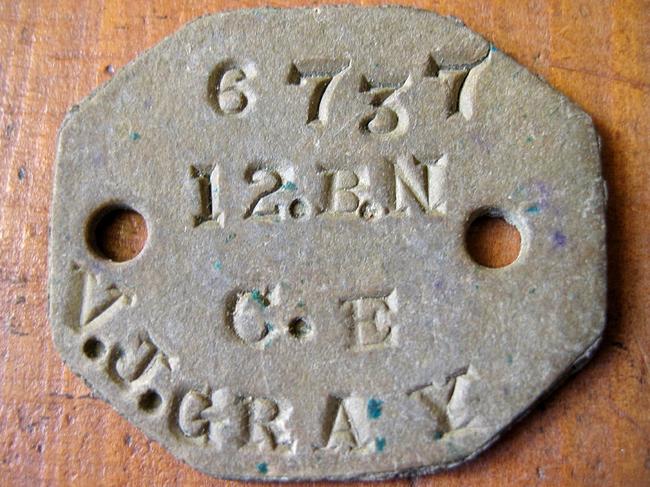
The boys’ distressed family soon received telegrams notifying of their deaths. First Victor on April 29 and then Charlie on May 4.
Upon receiving the news about Victor, his devastated mother wrote to her son Charlie advising him of his brother’s death. She adds in the brief postcard that she is “nearly off her head with grief”. Little did she know that Charlie had died five days after Victor.
Nursing injuries and illness in a hospital in England in August 1917, Charlie’s mate Charles Woolford wrote to John and Louisa Gray to provide details of their sons’ deaths in response to desperate letters from Louisa and John trying to find more information.
Woolford’s letters are very carefully worded and give little actual information, no doubt to avoid being amended by censors.
On April 8, 1918, nearly one year to the day after their deaths, sister Gladys gave birth to a baby girl, named Victoria Charlotta in memory of the uncles she would never know.
In 1918, Louisa and John built a brick house at what is now known as Grays Rd, off Huon Rd at Fern Tree.
The house was named “CharlVic Cottage” in honour of the two boys. Two cypress trees were also planted behind the house in view of the kitchen window, possibly so Louisa could see them as she went about her day caring for her large family.
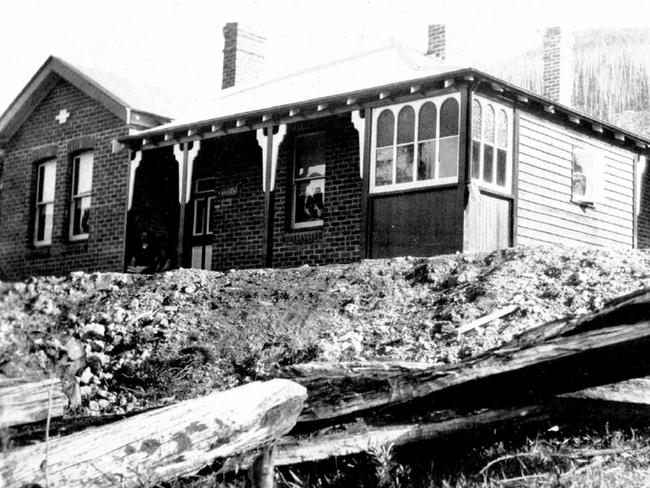
Outliving her beloved sons by 50 years, Louisa died in June 1967, three months short of her 93rd birthday. She continued to visit the boys’ trees on Soldiers’ Memorial Avenue until her 80s, having a picnic there every Anzac Day with family members between the boy’s trees and also visiting again on Hobart Regatta Day.
Uncle Vic and Uncle Charlie’s deaths always loomed large in the Gray family. Their generation didn’t often talk about them. My great grandfather George Gray was their brother and was 18 when they were killed.
He was the next brother in the family and had wanted to follow them to war but their father refused consent.
My uncle Philip once asked George about them, and George — who was otherwise very stoic — became so upset he was unable to talk. This would have been at least 50 years after they died. I think the pain never went away.
George was deputy lord mayor of Hobart, an MLC and MHA in the Tasmanian Parliament and a business owner. The family opinion is he achieved so much to make up for his brothers losing their futures.
My four-year-old son is named Charles Victor John. There have been other family members named after the boys including their niece Victoria Charlotta who was born on April 8, 1918, one year after Charlie and Victor’s deaths, and also a nephew named Victor.
The house “CharlVic” survived the 1967 bushfires and remained in the family until 2011. Studio portraits of Uncle Vic and Uncle Charlie now hang on the wall in my home.
Danielle Gray is secretary of the Friends of Soldiers’ Memorial Avenue.
